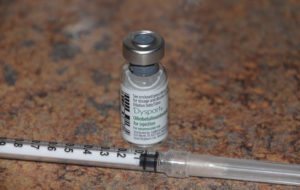
As the two prepare to go head to head in the battle for the cosmetic patient, how does one compare Dysport vs. Botox? Some doctors are saying Dysport works faster, lasts a little longer and is less expensive. It also might work on people for whom Botox has stopped working, because the body has built up a resistance to it over time after many injections. Other doctors are saying there is very little difference and they are really fairly comparable, but Dysport will definitely cause the price of Botox to drop.
According to one doctor who participated in the U.S. clinical trials on a large number of patients (1500 patients over 5 years), his experience was that it does last longer. In those patients who had tried both, his patients ‘loved’ Dysport and had great results with it. However, his experience is that Dysport is bit trickier to use which will have an impact on how good the results will be. It is not clear what makes it trickier. Most likely this means how it is injected and in what dose for any given area. Whether one will have the same results as this physician, who has developed a very learned skill at using Dysport, remains to be seen.
There are some differences in the size of the toxin molecule which may account for the reported larger zone of diffusion from the injection site with Dysport. It is hard to know if this will be an advantage or disadvantage yet. The dosages between Dysport and Botox with a bottle of botox being 100 units and a bottle of Dysport at 300 units. Clearly there will be a learning curve for the first few months of use to figure out how to optimally dose patients.
I can’t honestly say at this point, based on all that I have read, that the differences between Dysport and Botox are significantly different. Unless one has done a direct head-head comparison between the two in the same patient, one can only conjecture and believe whatever authority one chooses. Ultimately I will have to make these determinations based on my own patient experiences.
But what I can for sure is…the competition brought by Dysport will affect Botox usage and company behavior. Since Botox has had a monopoly on these treatments for many years, there is definitely a subculture of physicians who do not care for the service of Botox’s parent company and its pricing. Some of these will use Dysport out of spite or use it to market the newest beauty treatment on the block. This will likely drive down the price of Botox as a result of the competition. While doctors may have a spurious debate over which one is better, the real winner will be the patients who will be able to get their ‘facial fix’ at lower pricing amidst the upcoming ‘toxin war’.
Dr. Barry Eppley
Indianapolis, Indiana


